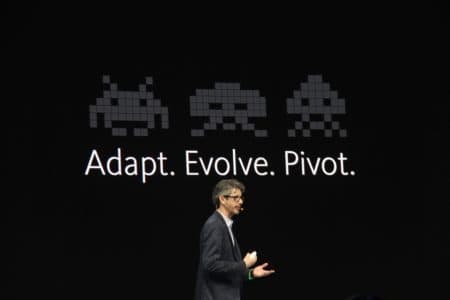This article is also co-authored by Kevin Cahill.
There is a lot of talk and hype about what is happening in the world of virtual or augmented reality, but do we really understand where it is headed? And how will we participate either as a user or creator of this virtual or augmented world?
But here is what we now know. Architects and engineers are going to see a big demand in the future for creative talent to help design these worlds and places.
The Key Summit of the Year for VR/AR
Unity put together a VR/AR Summit for enthusiasts, professionals, investors, and architects engineers who were trying to understand where they fit in this new technology.
Alan Robles from Gensler said, “Architects and designers are going to be important in VR as they will design the place.” What is a world without a place? Robles spoke at a breakout session titled, “An Emerging Technology Future” and he spoke of Gensler—one of the world’s largest architecture firms—becoming just as much a technology company as a design firm. At this point, he says, their focus is AR (augmented reality) and Gensler is prepared for the change in technology, as it will change the way they design. (image 01)

01 – Alan Robles of Gensler, one of the largest architecture firms in the world, speaking at the keynote for 2017 Vision VR/AR Summit. Image: Copyright, Akiko Ashley. All rights reserved.
The “Vision VR/AR Summit” in 2016 was such a success, Unity decided to host a second conference delivering even more creative, technical and business insights. Architecture, a professional discipline, was a focus of three of the Breakout panels. NASA JPL showed how they could interact with engineering projects using Protospace. The keynote for the summit had some of the best minds in VR/AR. VR/AR creation is platform agnostic with a lot of development on Apple’s macOS and iOS platforms.
So this is a good time to become familiar with these tools as VR is a growing market and it can help clients see design in a much more intuitive and immersive way.
Conference Breakout Sessions
This conference offered Breakout sessions like:
- “Massive Mixed Reality – Leveraging Large 3D models with mobile XR” (focus on huge architectural files and porting them to Unity),
- “Architects and the future of AR Design” with Alan Robles from Gensler
- “Unity Beyond Games (Architecture, Engineering, and Construction)” speakers included Alan Robles (Gensler), Will Adams (Mortenson), and (HGA).
Unlike other similar conferences, where you feel you can’t relate to the speakers, this conference had a more intimate feel with a more personal tone. Cheers and applauds after each speaker let you know that the attendees were inspired and ready to embrace this technology.
Conference Opening Keynote
Tony Parisi, head of VR and AR strategy at Unity Technologies, opened the Keynote with a high energy speech about how development should be a democracy and accessible to all—how people are using VR and AR to help instruct people how to build things.
Tony then introduced John Riccitiello, CEO of Unity Technologies, who brought up the point of how do we get VR/AR technologies out to everyone; price (under $1000 dollars), mobility, and content. After this brief speech, he introduced legendary Evolutionary Biologist Richard Dawkins who naturally had something intriguing to say about this new evolution in tech. (see image 02)
VR Is Millions of Years Old
Richard Dawkins felt that virtual reality was actually a concept that is millions of years old. He asked the audience to consider the idea—that virtual reality was run by software in the brain. Our reality, he says is “part of a constructed model world” created by a filter in our brain that processes large amounts of unadulterated data, much like how VR creates a reality using software and hardware.

02 – Evolutionary biologist Richard Dawkins speaking at the keynote. He said VR is actually millions of years old and a process of our evolution. Image: Copyright, Akiko Ashley. All rights reserved.
Dawkins talked about how a species constructs the virtual world it needs to favor survival. He asked the question, “Do bats hear in color?” The bats’ senses adapted to survive in this world and how they must perceive it very differently than humans do. Their reality is somewhat of a virtual reality. Evolution is indeed versatile with intelligent design; he presented example after example from the animal and human world.
New Features in Unity
Once his speech was done, Parisi came back to the stage with some announcements about new features in Unity including improved lighting, single pass stereo, with integration with VRWorks from NVIDIA and Text Mesh Pro support.
MORE: Strata Intros VR17 Release—For Flagship Strata Design 3D CX Application
We were shown an example created by Mirada showcasing a VR piece that had CG elements and live-action layers that seamlessly worked together in a scene. All the layers of elements were easy to edit and change within Unity. Architects would appreciate this piece as a (live action) gazebo was brought to life with CGI seagulls that gave the space life. The landscape for architectural design is changing, as virtual worlds will demand these skills for creating designs of spaces and places in VR/AR.
Finally, Natalie Grant, Senior Product Manager of VR/AR, took the stage to show a 360 video with animated objects using new video playback features in Unity.
After the link, the next page runs through the many companies at the 2017 VR/AR Summit and what they discussed, announced, or are working on.
next page: VR/AR Announcements By Companies: Audi, NASA JPL, Facebook, and More…




Reader Comments
Comments for this story are closed